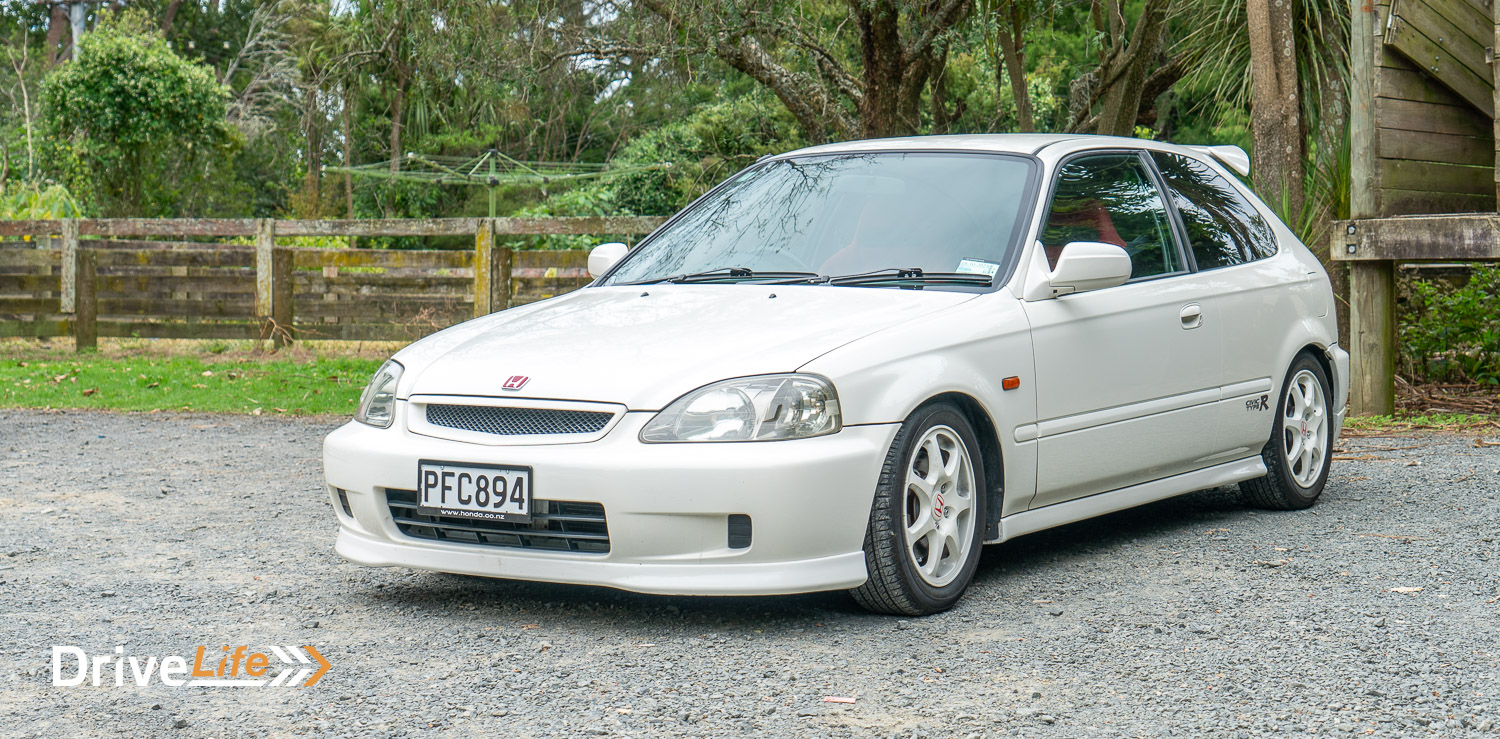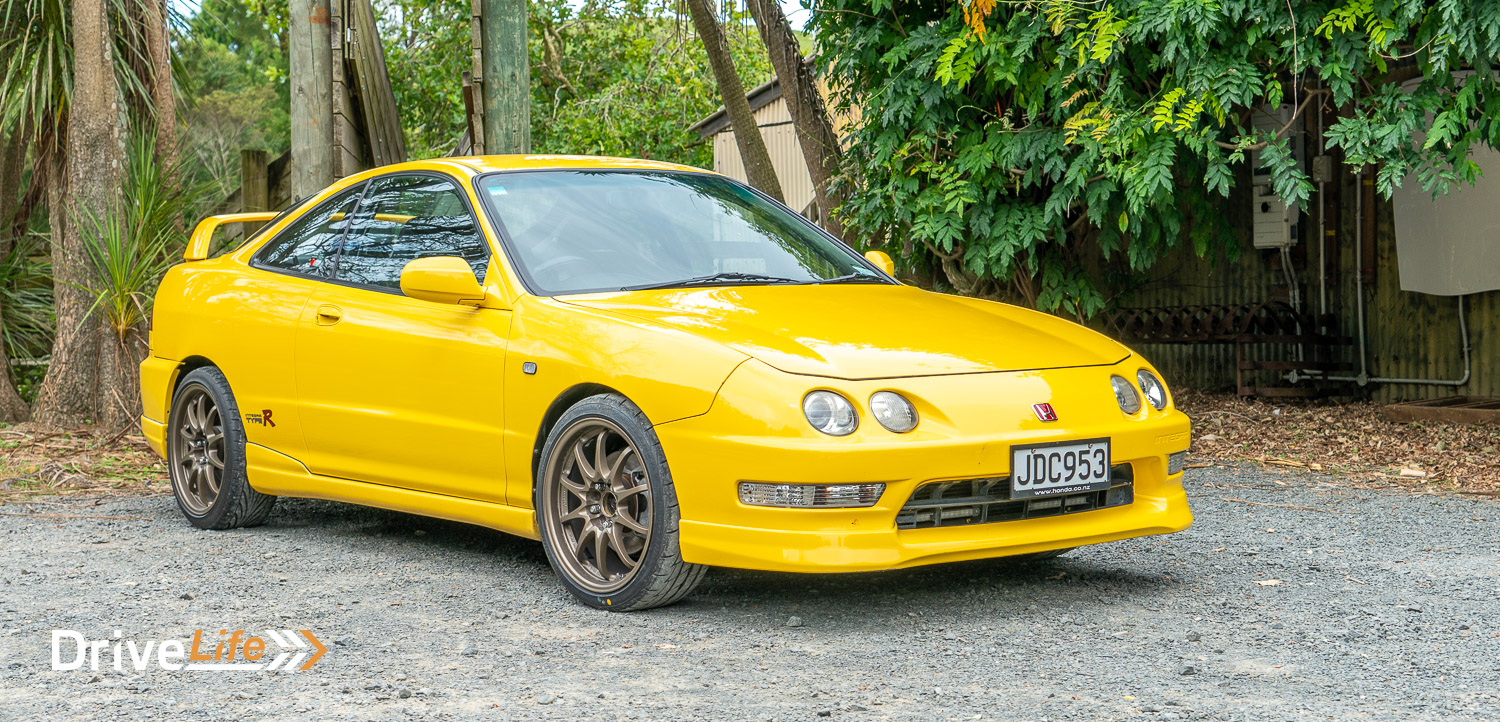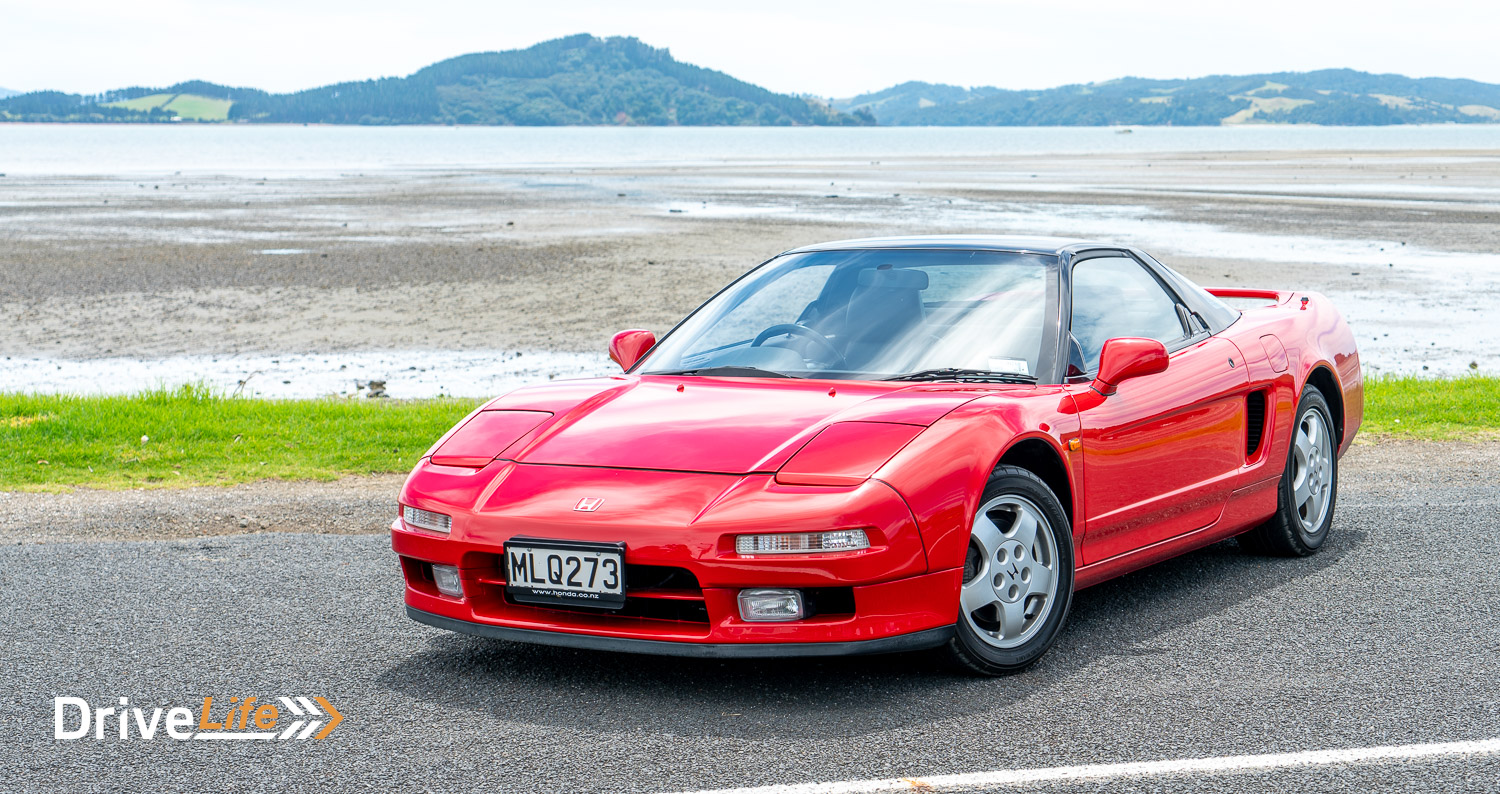DriveLife recently attended the launch of the new Honda Jazz RS in Auckland. Before attending the launch, Honda New Zealand said they were keen to showcase some of their sporting heritage along with it. DriveLife got the rare opportunity to test some of Honda’s best road cars of the 1990’s.
Honda is a quiet juggernaut in the motorsport world. Why quiet, exactly? Probably because they tend not to grab headlines as much as brands like Ferrari, Mercedes and Porsche.
More so, Honda’s involvement in motorsport is somewhat hard to follow for casual observers, primarily because their participation isn’t limited to the Honda brand. In some cases, Honda is a direct participant, in others they’re an engine and parts supplier. Sometimes they go under their North American name, Acura. Frankly, I wouldn’t blame you for losing track of it all.
Although, you needn’t look far nor hard to realise just how extensive Honda’s motorsports achievements are.

It was a Honda engine powering Red-Bull’s RB-18 F1 car that secured the 2022 constructors championship and won Max Verstappen the 2021 and 2022 championships.
Earlier this year, Honda took out the 2023 24 hours of Daytona championship. In 2022, they also took the Indy 500 championship, and they’ve had 7 out of 10 MotoGP titles between 2010 – 2020.
This isn’t even considered Honda’s best era of motorsport either.

That era belongs to Honda in the late 1980’s when McLaren-Honda were dominating Formula 1. With Gordon Murray and Steven Nichols in charge, and with Ayrton Senna and Alain Prost driving, McLaren-Honda fielded the MP4/4, which is still one of the most successful F1 cars of all time.
Honda, realising they were beating Ferrari and Lotus on the track, decided to take it to them on the road. What followed in the 1990’s was Honda entering what is widely considered to be their golden era for their production cars.
First came the Honda NSX, which was Japan’s answer to the Ferrari 348. Then came the Type R line-up, which included the Integra, Civic, Accord and several more. Finally, they capped off the decade with the S2000, a spiritual successor to Honda’s first sports car.
Today, these cars are considered to be amongst the most iconic JDM performance cars. It was a time when Honda was showing the world what it was capable of.

Honda New Zealand were keen to share that sportscar heritage with us. This meant I had the rare opportunity to experience the Honda NSX, Honda Civic Type R (EK9), Honda Integra Type R (DC2) and the Honda S2000, back-to-back.
And, I’m about to tell you which one is the best.
The Test
I had a short period with each car, but enough of an opportunity to get a good feel for them. We were situated around Clevedon, a rural community on the outskirts east of Auckland, New Zealand. This meant we were out on country backroads, with some tight and technical sections to really enjoy each car’s capabilities.
For the record, this test is as basic as it sounds. In short, I’m going to get in it, hoon it, and tell you which one I liked the best. Is it completely unscientific? Yes. Valuable consumer advice? Probably not. A once in a life-time experience for me? Absolutely.
As it turns out, ranking these legendary Honda’s was going to be tough.
Anyway, without further ado, here’s how each car stacked up.

4th Place: Honda Civic Type R (EK9)
It feels dirty even thinking about putting the original Civic Type R last. Particularly so, as it’s the only Type R model to have survived several generations.
I suppose one could liken it to the Olympics. Everyone competing is in the top 1% of their game, but only a few can take the podium.
Anyway, fourth place may be last on this list, but the Civic Type R is no last place performer.

The EK9 Civic Type R is a proper, dyed-in-the-wool, old-school hot hatch. It channels the energy of the 1980’s hot-hatch greats while adding buckets more power, more handling precision, and importantly, Honda reliability.
The 1.6L B16B V-TEC engine feels raw and unadulterated. It’s an engine with character, for sure. The V-TEC cam lobe is aggressive, meaning that 5,500rpm jump will make you grin-ear-to-ear. Honda’s heritage Civic Type R has a tasteful aftermarket pipe on it, which only added to its theatre.

Sure, the engine might only generate 135kW in standard guise, but in a frame that barely weighs a tonne, you’ll be amazed how quickly this Civic will chew up the tarmac. Chasing the Civics’ powerband is only more rewarding with its slick manual transmission. It’s so good, you’ll find yourself rowing gears simply for the mechanical pleasure.
Above all, it’s the playful chassis that’ll really make the driver sing the praises of the Civic Type R. It’s lightweight, stiff, and it’s keen to play around underneath you. The levels of mechanical grip are also immense. The Civic will claw onto the tarmac with its front wheels like little else, hauling the rear-wheels through with it. Speaking of, I’ve personally seen these Type R’s cock the rear wheel in a high-speed corner. It’s properly hilarious.

In short, the Civic Type R is a complete riot. It was the only car of the bunch that made me feel like I was a 17-year-old again. Any car that can recreate this level of mischief in an adult is worth every dollar you spend on it.
I loved this wee Civic, and judging by my words, you wouldn’t think it could get much better …but it can.

3rd Place: Honda NSX
Okay, okay, OKAY! Just hear me out for a minute. Don’t sharpen that pitchfork just yet.
I am acutely aware of the automotive sacrilege I have just committed. I ranked the original Japanese super-car of the 1990’s – the Senna designed, Ferrari-slaying Honda NSX, in third place. Remain calm.
This decision was less to do with the NSX itself, and more to do with the driving environment.

The Honda NSX is a remarkable car, not only because of its storied history, but because of how it drives. It’s brilliant and I’m still buzzing from the experience.
Although, you can tell the NSX likes a racetrack, and unfortunately, we weren’t on one. Instead, we were on New Zealand’s sharp winding bends in the countryside where it was harder for the NSX to deliver its best.
Even then, driving an NSX at seven-tenths of its capability is still a marvellous thing. The handling, grip and high-speed stability allows you to obliterate corners with remarkable speed. The NSX draws lines through corners, sticking to them with scalpel-like precision.
That said, the NSX’s mid-length wheelbase, longer body and having an open differential lends itself to fast and progressive cornering. The chassis, on the other hand, is not as reactive as you’d like for fast changing turns.

Compared to the cars in this list, the NSX isn’t as agile and light on its feet. It has a more neutral turn-in, and appreciating the texture of the manual steering can be tough when trying to get the body to set. The NSX’s stiff chassis isn’t particularly pliant on New Zealand roads either.
Surprisingly, the highlight was the engine. The transversely-mounted, 3.0-litre V6 engine produces a beautiful induction howl, earning the NSX its supercar credentials. The short precise throw of the NSX’s manual transmission is one of the reasons why Honda gained its reputation for developing some of the best manuals in the business.
The NSX feels fast too. Sure, the quoted 276hp of the NSX doesn’t seem like much today, but like most Japanese supercars of this era, that figure is almost certainly understated. In other words, Japanese horses back then were the proper Clydesdales and not just mere Shetland ponies.
On the whole, driving the NSX was one heck of an experience. I loved it, and I would do it again in a heartbeat. But I couldn’t extract the NSX’s best in this setting. In the right setting, the NSX would potentially score higher. I am fully aware that my driving mediocrity might be a factor too.
But for me, it wasn’t as satisfying as the next two on this list.
2nd Place: Honda Integra Type R
The Integra Type R is one of the best handling front-wheel drive cars in existence. Who said that? Well, pretty much the entire internet did.
Browse through many enthusiast websites and you’ll find two types of people. Those that think the Integra Type R is the best, and those that are wrong. Still, I was keen to make that verdict for myself.

But anyway, you’re probably wondering how on earth the Integra Type R beat the mighty NSX. Isn’t the Integra Type R similar to the Civic Type R? Is this guy totally full of it?
The answer is yes …and yes.
Like you, I expected the Integra and Civic Type R to be the same steak, but with different sauce. Although, the Integra Type R differs from the Civic Type R in many ways you wouldn’t expect.
Right from the go, the Integra Type R is more free revving, spinning its B18C engine up to red-line quicker than the Civic Type R. The freer revving engine pushes you to the top end faster, allowing you to exploit the B18C’s extra top-end performance over the Civic’s B16B engine. You’re also shifting the Integra’s slick manual transmission more often, engaging yourself with the experience all-the-more.
The chassis balance and handling also feel different too. Where the Civic Type R feels heavier over the front-end, the Integra Type R feels more neutral. It has more weight over the rear compared with the Civic, possibly due to the massive hatch-mounted wing playing a role in that.

With more load over the back, the front-end feels dartier. The Integra turns in better and changes direction quicker, but without sacrificing any of the Civic’s sure-footed mechanical grip. These subtle adjustments broaden the Integra’s performance boundaries, meaning you’re able to push the envelope more. On my drive, I was definitely getting good use of the front limited slip differential, for sure.
In short, everything happens quicker and comes at you faster in the Integra Type R. It feels more aggressive and more purposeful, without toning down the fun-factor.
Simply, it engages you in a way the Civic Type R doesn’t.
So, it’s better than the Civic Type R, but how did it beat the NSX? The answer to that, if you read the previous section, is the driving environment. The Integra Type R is almost perfect for this type of road.
My gosh, it’s good. It’s one of those cars that definitely lives up to its hype. As front-wheel drive cars go, it might be one of the best. But overall, it’s not quite as good as the next car…

1st Place: Honda S2000
From the company that perfected the front-wheel drive performance car, their best car is a front-mid-engine, rear-wheel driven, two-seat convertible?
Yup. You read that right. The Honda S2000 is first on this list.

Now, I ought to make my conflicts clear. I do own an S2000.
Does that make me biased? Yeah, probably. But, being an owner, I have more experience with the car compared with someone who’s just had a blat for 30 minutes.
So, I know what the S2000 is like in many settings. I can also say hand-on-heart that after driving the best Honda’s of all time, it has only entrenched my love for the S2000 more.
There is so much that is so good about the Honda S2000. The spec-sheet alone is engineering pornography.
It’s a front-mid engine roadster, with a 50/50 weight distribution. It has a high X-bone chassis structure, giving this roadster the underbody rigidity of a coupe. There’s double-wishbone suspension all-around, Showa dual-piston shocks and a helical limited-slip-differential, all of it from the factory. Like all Honda’s of this era, it’s also a featherweight, tipping the scales at around 1200 kilograms.

Then, there’s the legendary F20C engine made exclusively for the S2000. The naturally-aspirated 2-litre four-cylinder is a potent powerplant, producing 184kW (or 177kW for the USA) while screaming to a red-line a hair shy of 9,000rpm.
I’m not exaggerating when I say this is probably one of the best production four-cylinders ever made. It’s notoriously overbuilt and has proven to be exceptionally reliable. Heck, the engine has forged aluminium internals from factory! More impressively, the F20C held the record for having the highest power output per-litre of any production naturally-aspirated engine for nearly an entire decade, until it was overtaken by the Ferrari 458 Italia.
We can’t talk about the F20C without mentioning the gearbox. The S2000’s 6-speed manual represents the peak of all of Honda’s manual transmissions. Short throw, tight ratios and an action that feels like you’re cocking a rifle.
Is there a better feeling transmission? If there is one, I have yet to experience it.

I could spend hours on the spec-sheet, but what matters is how it all works together. So, what should one expect piloting an S2000? Well, it’s hardly surprising, but…
This. Car. Handles.
The S2000 is eager to eat corners. Tip the nose in and the whole car sets into position, tracking through corners beautifully. Its lightweight and balanced chassis, coupled with a short wheelbase, makes the S2000 eminently flickable. It changes direction with terrier-like speed, playfully rotating on the exit.
The chassis has a beautiful natural rotation. The front-end wants to point-in when you lift off the throttle. Under deep-braking, the car primes itself for corners with a subtle natural rotation at the rear, almost like it’s angling itself for the optimal apex. Cornering in an S2000 just feels so intuitive.
Keep those revs up, and the S2000 will hustle through the bends with impressive pace. It’ll only reward you more once you’ve exited onto the straight, when you’ll hear the F20C scream towards 9,000rpm. Speaking of, keeping the revs high is essential for extracting the S2000’s best.

In short, the S2000 is pure driving joy. The engine revs like a motorcycle, the gearbox feels like a Winchester, and the handling will irritate super-cars. It’s a glorious experience.
But above all, the S2000 rewards you for every ounce of effort you put in. The dynamics at the limit makes the S2000 one of the most rewarding cars you’ll drive. You’ll feel like a driving deity when you’re getting it right.
If you have the opportunity, drive one. You’ll come back a changed person.
…and, I’m never selling mine.
Final remarks
This was a tough list to put together because all of these cars are brilliant. They emerged from an era when Honda were at the top of their sports car game, and you get a real sense that each one was engineered by people that really cared.
It was an absolute privilege to experience these cars back-to-back. I need to tip my hat to Honda New Zealand for making this possible. Like the engineers that built these magnificent machines, Honda New Zealand cares about their cars whether it be a simple CRV or a sensational NSX.
It’s awesome that they’re committed to preserving the very cars that defined the brand for modern enthusiasts, and for keeping examples here in New Zealand.
A big cheers to everyone at Honda New Zealand for the experience. It’s going to be hard to go back to normal life after this.











Excellent article !
This era was peak Honda,
Nothing they make today compares to these classics, not even the vaunted Civic Type R which is sanitised and characterless compared to the very best old hot hatches.